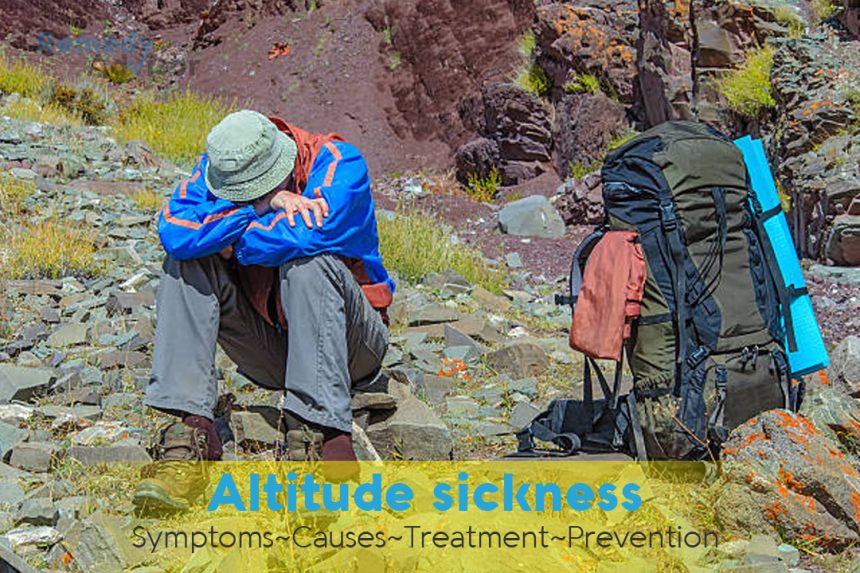What is it
Travelers going by plane from sea level to high elevations such as Denver, Aspen, or Mexico City may suddenly experience shortness of breath, fatigue, headaches, nausea, and other symptoms resembling flu, then this type of situation is called acute mountain sickness (AJVIS). It is considered the most common type of altitude sickness. It normally occur at heights as low as 5,000 feet, where it is likely to last only a day or so, but is more common above 8,000 feet. At elevations over 10,000 feet, three out of four people will have minor symptoms.
Not everyone feels sick at higher altitudes, and there is no way to predict a person’s highest comfortable altitude. Being physically fit is not necessarily a protection. Indeed, athletes accustomed to working out daily at low altitudes may be the first to become ill if they continue intense workouts at high altitudes.
Susceptibility to AMS is greater in those under 40 years of age, perhaps because they are more likely to exert themselves at high altitudes. Skiers, hikers, and others who go above 8,000 feet risk getting more severe symptoms of AMS and at higher altitudes may even develop a serious medical emergency known as high-altitude pulmonary edema (HAPE). This life-threatening condition is due to an accumulation of fluids in the lungs and can lead to death if not treated immediately. Those afflicted must immediately descend at least 2,000 to 3,000 feet and then be treated in a medical facility.
Symptoms
- Headache
- Fatigue and insomnia
- Dizziness and nausea
- Shortness of breath and rapid heartbeat accompanying physical exertion
- Impaired thinking
Symptoms usually begin 12 to 24 hours after arrival, are worse at night when respiration slows down, and typically decrease in severity by the third day.
What causes it
As mountain climbers know, altitude sickness results from a lack of oxygen caused by going too high, too fast. Barometric pressure decreases as you go higher that is, the air gets thinner and you inhale less oxygen per usual breath. Trying to compensate for this, you breathe more deeply. The likelihood of symptoms increases the higher you go.
What if you do nothing
Most people who develop acute mountain sickness will feel well within two to three days by taking it easy and avoiding strenuous activity. However, if you go up to 10,000 feet and higher and exert yourself without adequate acclimation, the more serious high-altitude pulmonary edema (HAPE) can develop.
Home remedies
If you are going to the Rocky Mountains or another high-altitude region, you can probably alleviate symptoms of AJVIS quickly by taking the following measures.
Acclimatize and take it easy
Spend first day at high altitudes relaxing. Do not do even mild exercise until you get familiar to the new heights.
Drink Plenty water
Drink sufficient water to remain hydrated, nearly three to four quarts. Urine must be clear and abundant. Also avoid alcoholic beverages. Fast, deep breathing you do at higher altitudes may have a tendency to dehydrate you, an effect that alcohol strengthens.
Get headache relief
Acetaminophen can be taken for headache. Avoid aspirin, since it may make a high-altitude headache worse.
Don’t go up until symptoms go down
Don’t go any higher if you start showing symptoms of moderate altitude sickness until they decrease a few hundred feet to a lower altitude.
Prevention
Prepare for destinations above 8,000 feet. Spend a day acclimatizing at a lower level, or climb to a new level at a rate of 500 to 1,000 feet daily with an occasional day of rest. This allows the body to operate with decreased oxygen by increasing its depth of respiration, releasing more red blood cells to carry oxygen, and producing more of a particular enzyme that helps trigger the release of oxygen from hemoglobin to the body tissues.
People with chronic lung or heart ailments should avoid extreme altitudes.







